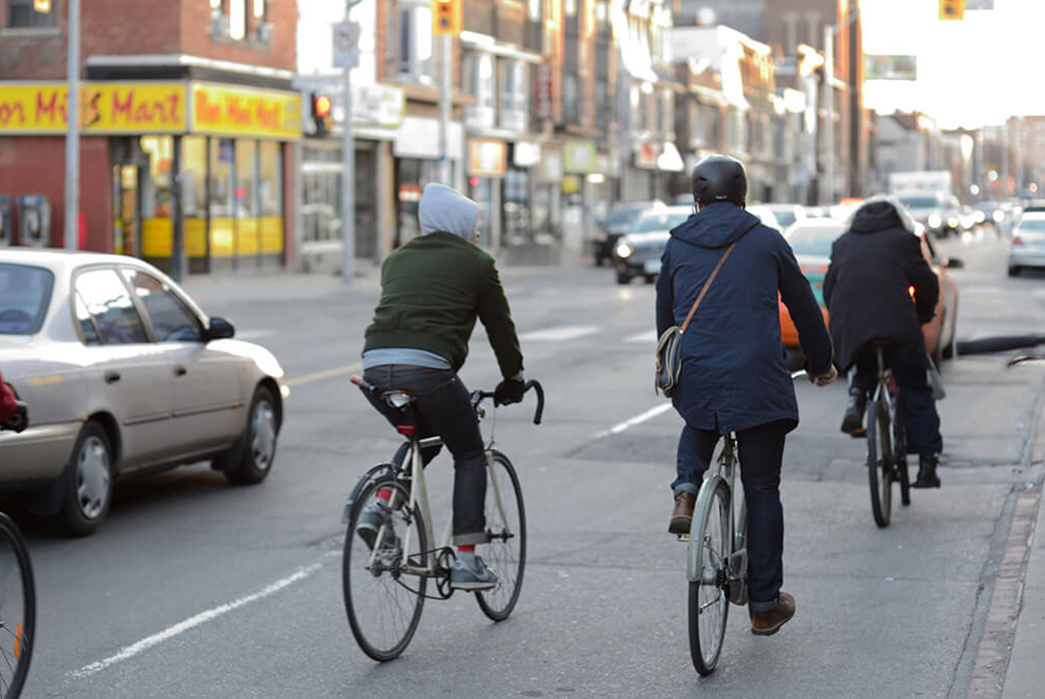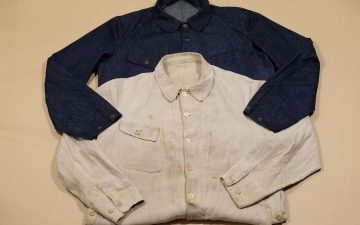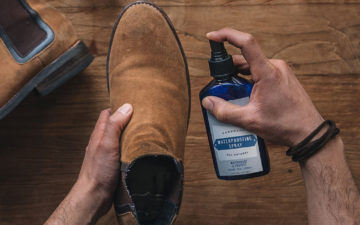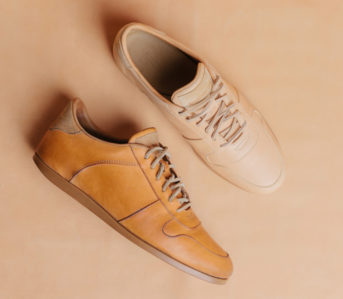To conclude our series on living more sustainably (see kitchen and clothing), we’re honing in on some of the aspects of our daily grind that can be managed in a more sustainable manner. It’s really easy to overlook these day-to-day aspects of our lives and how they impact the environment. Our daily habits are so hard-wired that many of us don’t think about our consumption of the world’s resources while brushing our teeth in the morning or stepping out of the coffee shop with a flat white to-go.
The term sustainable has no globally agreed-upon definition. Every aspect of human life affects the planet in a different way, and ongoing research only places more question marks over what can be labeled as ‘sustainable’. In simple terms, when we refer to a product or habit that is more ‘sustainable’, we’re accepting that it has less of an impact on the environment and the resources needed to make that product can be sustained at a reasonable rate.
There are countless lifestyle changes that you can make to reduce your consumption but we thought it best to start with some of the basic aspects of daily life that can be tweaked in small ways to improve the sustainability of your life.
Totes and Reusable Bags
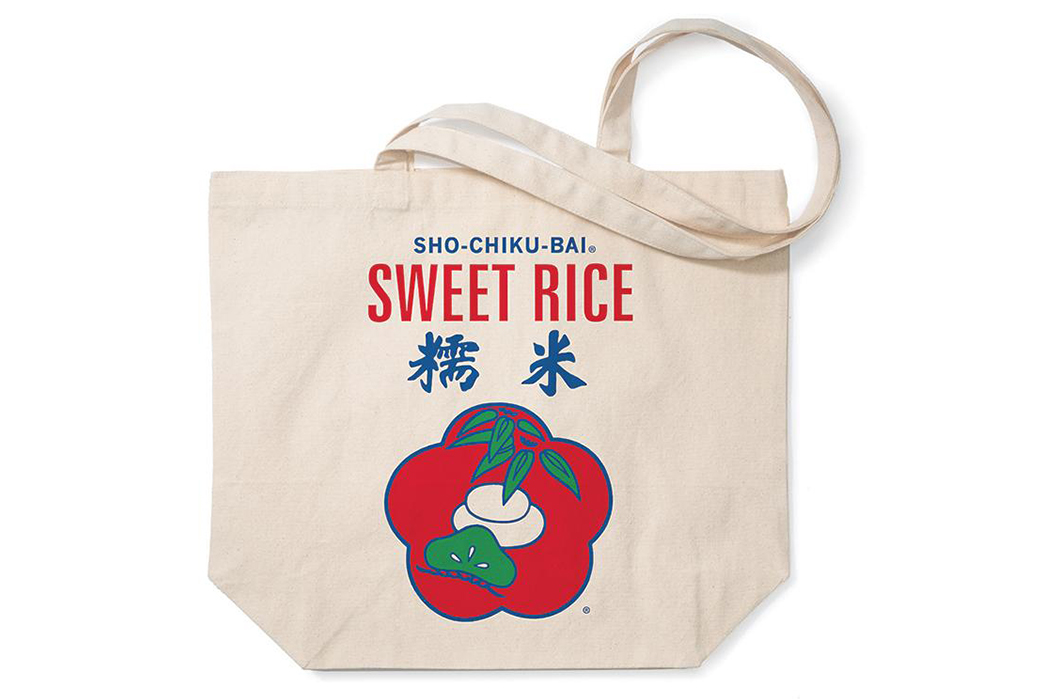
Image via Japanese American National Museum
Most of us have a solid bag that we use for our everyday carry. However, when it comes to grocery shopping or a quick dash to the store, we can often get caught short and end up with a plastic bag or two.
To tackle this, make sure you’ve got a nice minimal tote bag that will scrunch up into a jacket or jeans pocket. Many supermarkets will sell their own reusable bags, often made out of jute or cotton. For the few plastic bags you do accumulate, make sure you keep these stored safely so that they can be reused in the future [I use mine for bin liners! -Ed].
Cycle, Walk, or Use Public Transportation
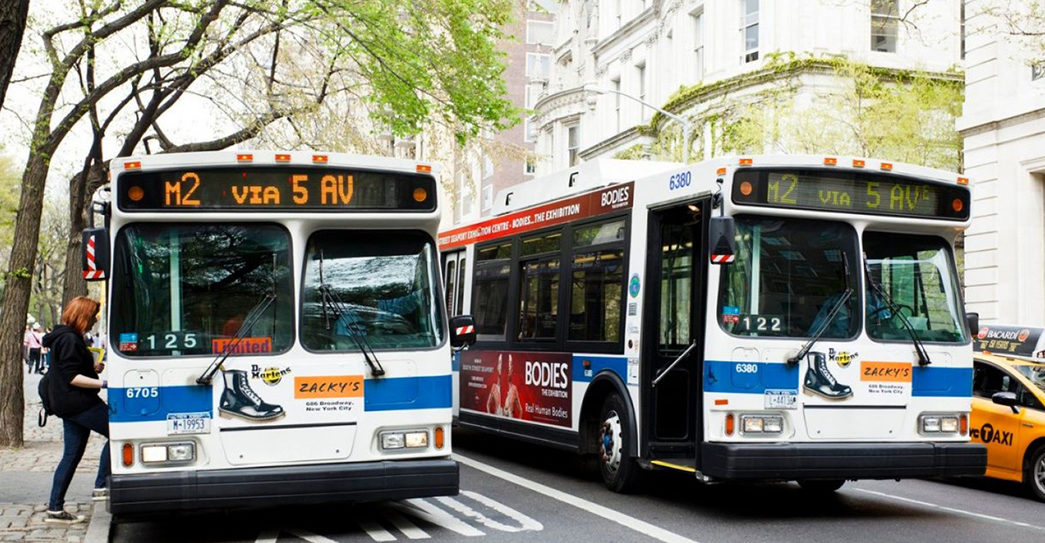
Image via New York State Senate
If your work location permits it, try ditching the car and using a more eco-friendly form of transport. It is claimed that motor vehicles in the US alone release approximately 1,549 million metric tons of CO2 into the atmosphere annually.
Using public transport is known to be one of the most significant actions one can take to reduce their energy use carbon footprint. Science Application International Co. has estimated that a single person can save 4,800 pounds of C02 per year by taking existing public transportation instead of driving a car. Public transport is also very easy on the wallet when compared to running and maintaining a motor vehicle.
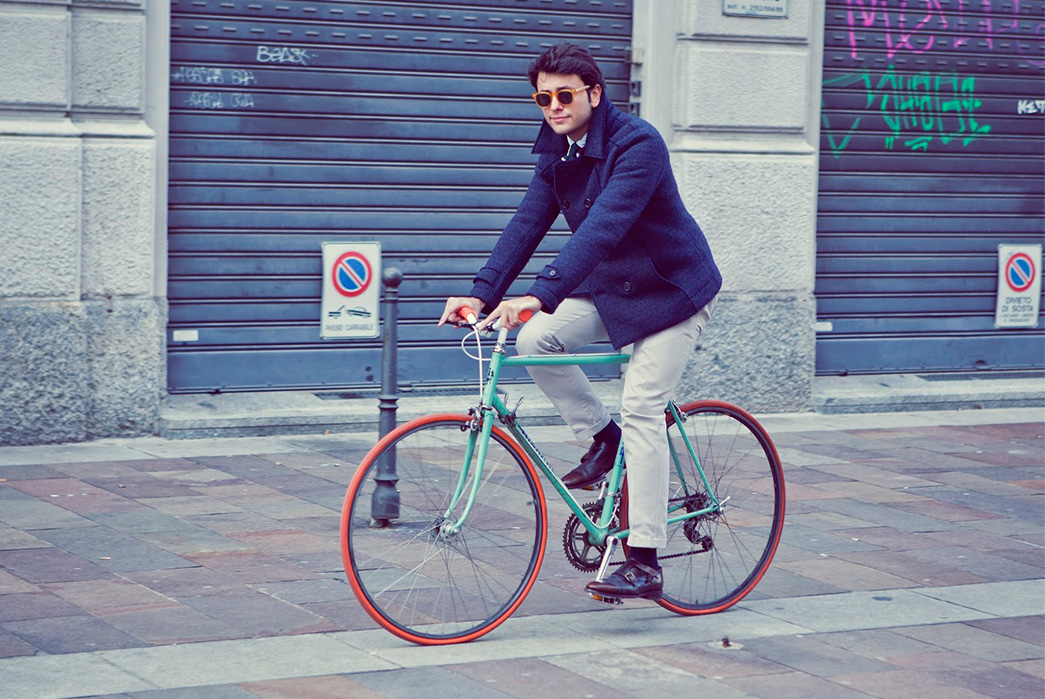
A modified vintage Bianchi racer in motion via The Bespoke Dudes
If you can avoid motor transport entirely and walk or cycle on a regular basis, then that’s even better! Walking and cycling are the most economical and energy efficient modes of transport, as well as providing you with an outlet for regular exercise. In addition, cycling can easily become a hobby and building/maintaining bicycles can be hugely rewarding.
Reusable Coffee Cup
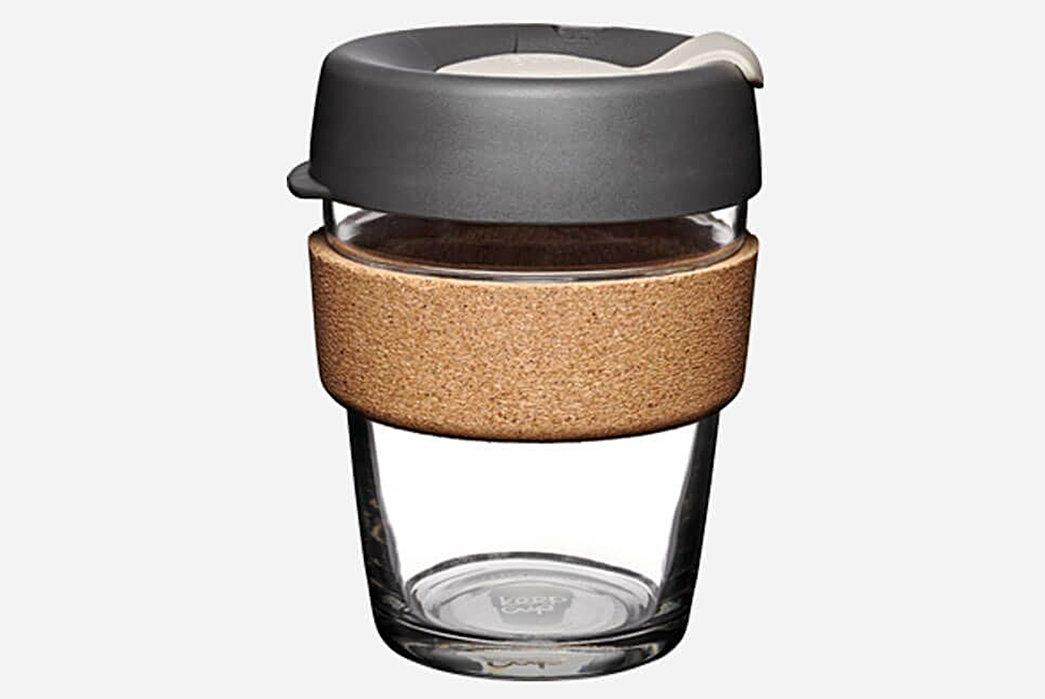
Keep Cup Medium Press cup in glass and cork, available for $36 from Keep Cup.
If you’re a regular coffee drinker, you’ll undoubtedly frequent your favorite coffee shop for a takeaway cup o’ Joe. Unfortunately, in the ever-growing concern for single-use plastics, disposable coffee cups have been highlighted as part of this problem. It is claimed that consumers use around 16 billion coffee cups are used each year, of which only an extremely small percentage are recycled.
Most disposable coffee cups are technically recyclable. However, their construction requires recycling procedures that cannot be achieved through standard domestic recycling services. Though they are made largely of paper, disposable coffee cups are lined with plastic polyethylene which is bonded to the paper, making the cups waterproof and able to contain hot liquids without disintegrating. This means they need to be collected separately and transported to a specialist plant, something that currently isn’t really feasible when considering the sheer amount of coffee cups in circulation.

Image via Eight Ounce Coffee
Catch 22? Not completely. You can totally end your own use of coffee cups entirely by investing in a reusable coffee cup or flask. Any decent coffee shop will encourage the use of reusable cups and will be happy to freshly brew your coffee using a reasonable vessel of your choice. It may seem like a small deed, but if everyone took this approach, the problem of disposable coffee cups would be all but solved!
Reusable Water Bottle
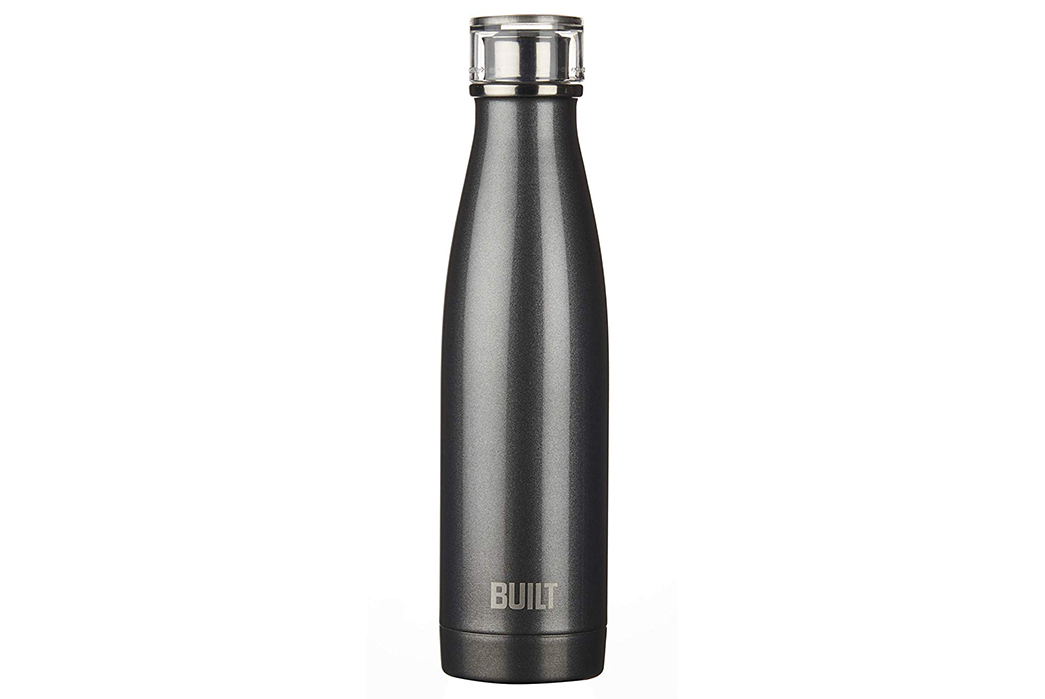
Built NY 17 oz. Stainless Steel Bottle, available for $15 from Amazon.
One of the main culprits in the swarms of floating in our oceans is the seemingly humble plastic water bottle. It is estimated that in 2016 alone, more than 480 billion plastic bottles were sold worldwide, many of which were not recycled. Just like the coffee cups, this problem is easily solved by purchasing a reusable alternative.
Fortunately, there are many brands pioneering this need with solid bottles that can withstand daily use. The above bottle by Built NY is made from double-wall stainless steel with vacuum sealed construction that keeps cold drinks at optimum temperature. Each bottle is fitted with a durable lid that’s leak and spill-proof.
Environmentally Friendly Dental Products
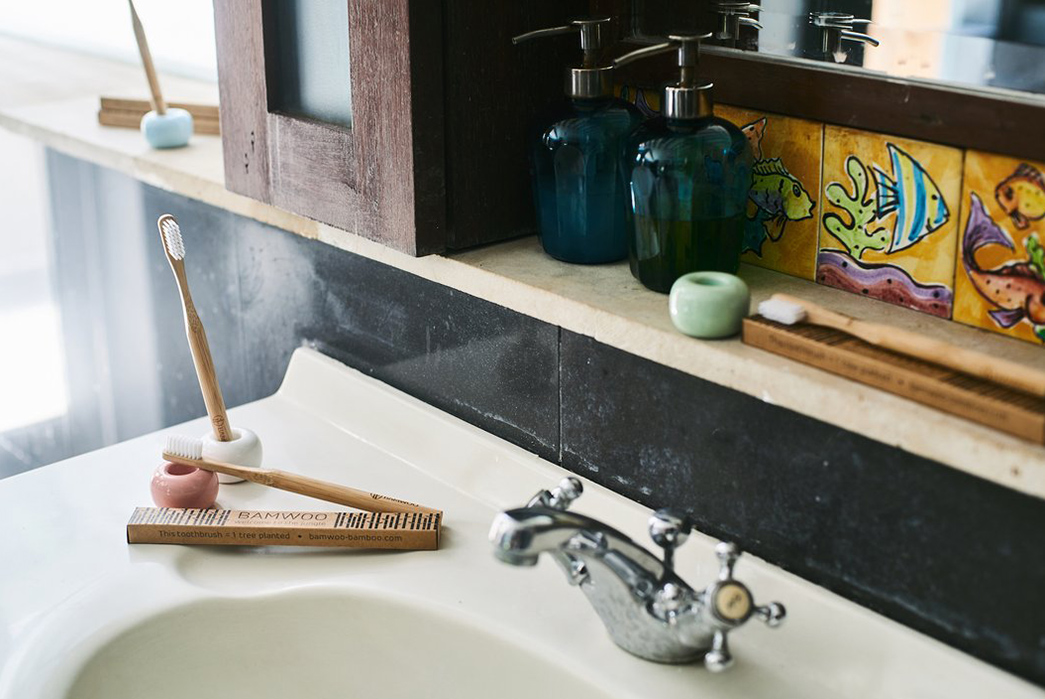
Image via BAMWOO
Your dental regime may be the last thing you thought would have an impact on the environment, but sadly, most fundamental dental care products affect your plastic footprint drastically over your lifespan. Toothpaste tubes, toothbrushes, floss, and mouthwash bottles all eventually end up in the trash, unable to be recycled due to contamination.
In terms of the direct environmental impact of dental products, many run-of-the-mill toothpastes contain substances that can potentially be harmful to the environment. Potassium Nitrate; a registered pesticide; Triclosan, an anti-fungal/antibacterial agent; and a host of artificial flavors and sweeteners are all examples of dental ingredients that can harm aquatic ecosystems due to the sheer scale of toothpaste spat back into the waterways.
While the chemical impacts are disputable, it cannot be argued that the packaging and materials of our dental products have an effect on the environment. Here are some examples of some more environmentally-conscious dental products:
Georganics Natural Toothpaste
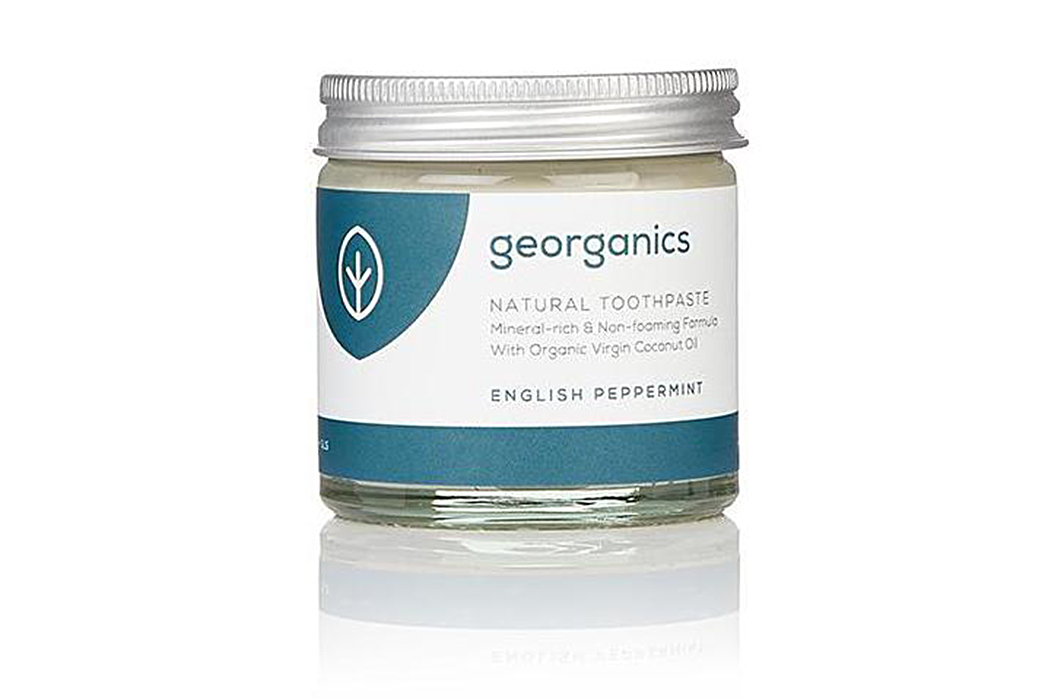
Coming in a fully recyclable glass jar with a metal lid, this natural toothpaste is free from toxic chemicals packed with natural oils and flavored with English peppermint. Available for $9 from Georganics.
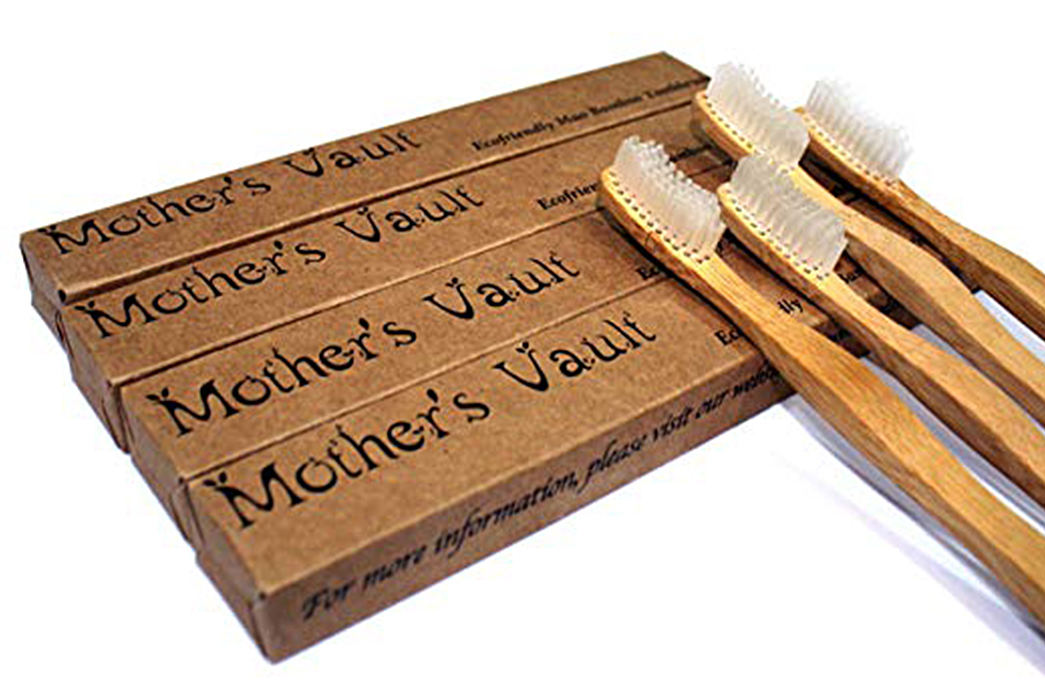
Mothers Vault Bamboo Toothbrush – These toothbrushes are completely recyclable/compostable and last up to one month. Available for $6.99 from Amazon.
Georganics Mouthwash Tablets
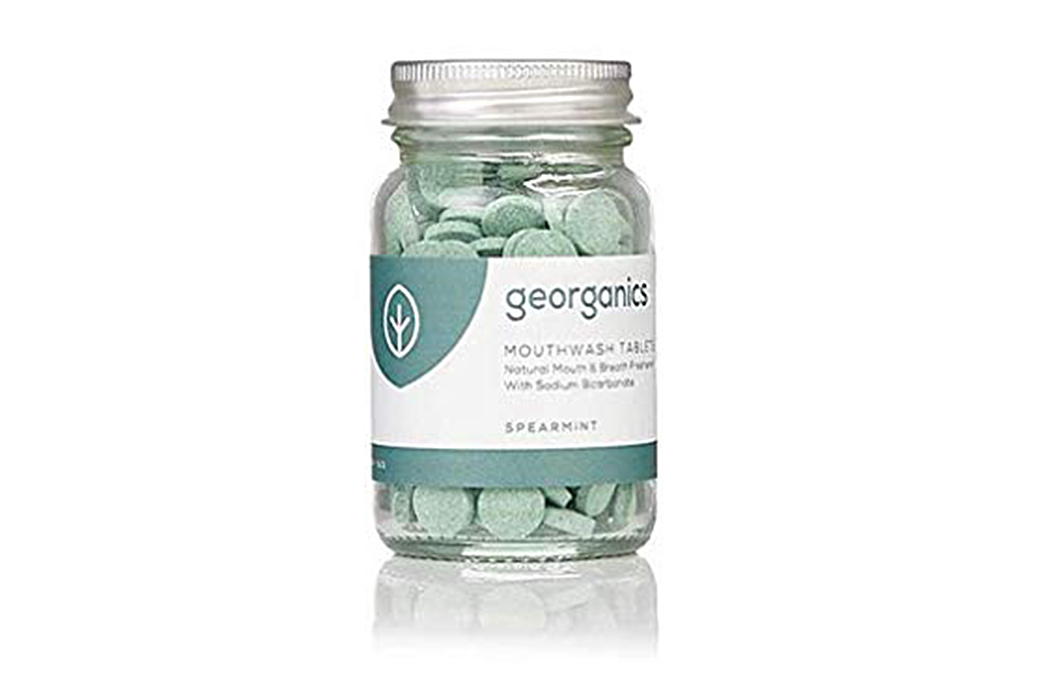
These handy tablets come in zero-waste recyclable packaging. Simply drop in a small measure of water to create a dose of mouthwash. Made from 100% natural ingredients, these tablets are a great alternative to commercial mouthwashes. Available from Amazon from $15.
Toiletries
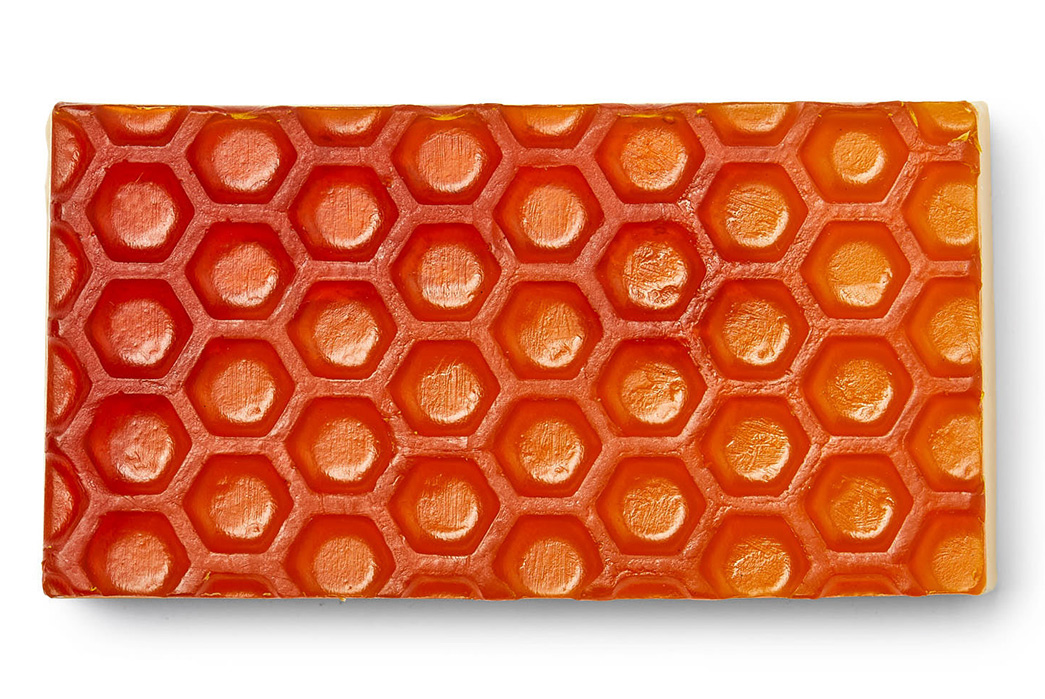
Lush Honey I Washed The Kids Natural Soap Bar, available at Lush for $8.
It is also worth considering your consumption of disposable packaging and single-use plastics in terms of your toiletries and cosmetic products. Take hand soap for example. Many bars of soap come in a plastic wrapper, inside a paper box that’s wrapped with film or plastic. Other soaps come in non-recyclable plastic dispensers. There is simply no need. The simple solution for this is to buy natural soap that’s packaged in a simple, paper wrap or box, or nothing at all, like the Lush soap featured above.
The same goes for shampoos, moisturizers, shower gels (the list goes on), but the concept remains the same. Here are some further examples of more eco-friendly toiletries:
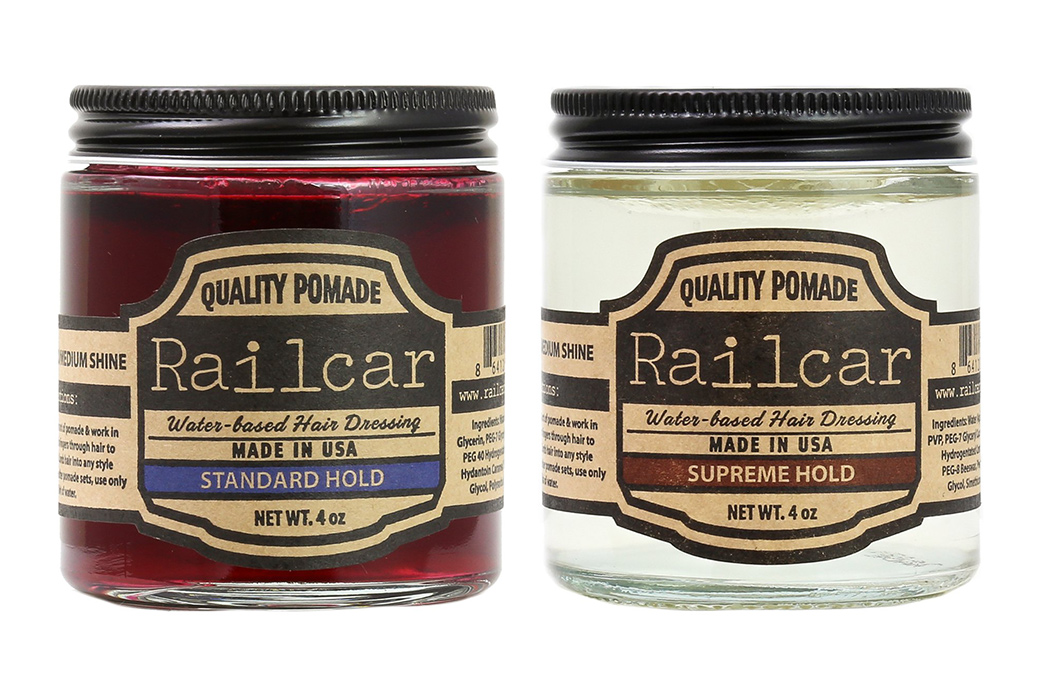
Railcar pomades come in a recyclable glass jar that can be easily repurposed. Available from $20 at Railcar.

Haeckels exfoliating seaweed bar is a 100% organic natural vegetable-based soap bar that uses crushed peppercorns and coriander seeds to exfoliate your skin. This nifty little bar also comes in plastic free, recyclable cardboard packaging and is free from any synthetic fragrances. Available for $5 from Goodhood.
Buy Second-hand and Thrift
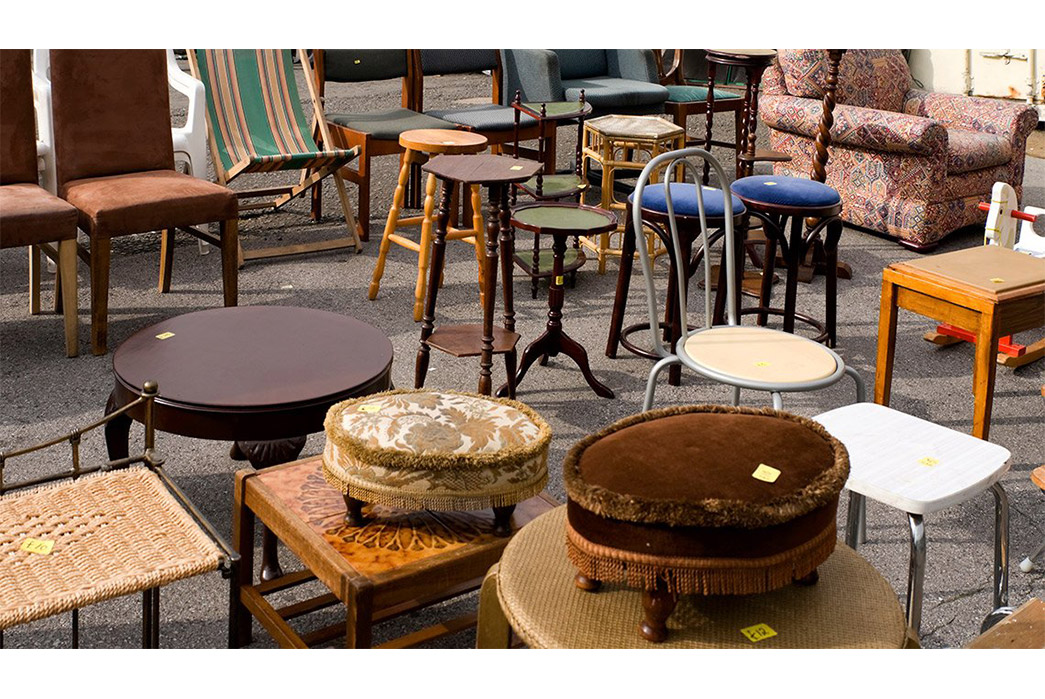
Image via AARP
We touched on the positives of buying second-hand clothing in our article, Living More Sustainably: Clothing, but this lifestyle choice reaches fair beyond the wardrobe. You can pick up virtually everything second-hand, and each pre-owned item you buy reduces manufacturing demands and cuts down on landfill. Furniture, kitchenware, electronics, vinyl, and other media formats like CDs and DVDs are items you can pick up at thrift stores, yard sales, and online platforms like eBay.
As well as saving you money and reducing your consumption, by buying second hand and selling/donating your own goods, you will inspire others to continue to sell and buy in the same way. You also have the thrill of the hunt. You may go weeks or even months without finding anything, but that makes it even sweeter when you come home with a decent haul.
Re-use, Re-cycle, Up-cycle
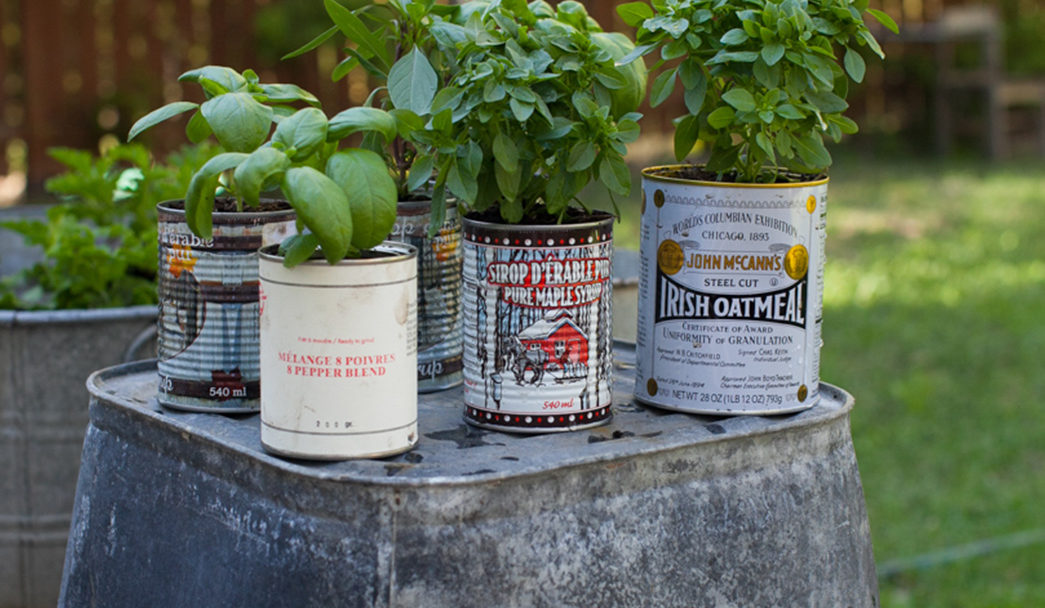
Image via Simple Bites
In other words, be mindful of what you’re throwing out. It’s really important to think about the energy and resources used to make each little thing in our lives and ensuring we can get the most out of every product. Once you throw something in the trash, there’s a big chance it will just be added to the billions of tons of landfill waste slowly rotting into the earth. So think twice!
Quite often, you will be able to find a secondary use for a lot of seemingly unwanted items. The internet is so full of inspiring concepts for up-cycling items that it’s hard to pick an example, but here are some basic ideas:
- Planters—Many of the household goods we throw away can be used as decorative planters. If you buy any foodstuffs in large cans such as coffee beans, nuts, or grains, these cans can be used to plant small household plants like herbs and chilis. An old colander can be used as a hanging flower planter, and even old boots can house some impressive plants.
- Wooden crates and boxes—We don’t need to tell you that you can make pretty much anything out of wood, but when you have old wooden crates or pallets at your disposal, these can very easily be turned into furniture, shelving units, or other storage. As wood is so easy to paint or varnish, there is endless scope to up-cycle a lifeless wooden crate into something special.
- Turn waste into cleaning products—This can seem counter-intuitive, but often things that are destined for the bin can be turned into something you can clean your house, or even yourself. Old t-shirts make good rags for applying polishes or wiping down excess oil from a bicycle or car, and you can combine kitchen waste like fruit rind and coffee grounds with soap-making agents to create your own homemade natural soaps.
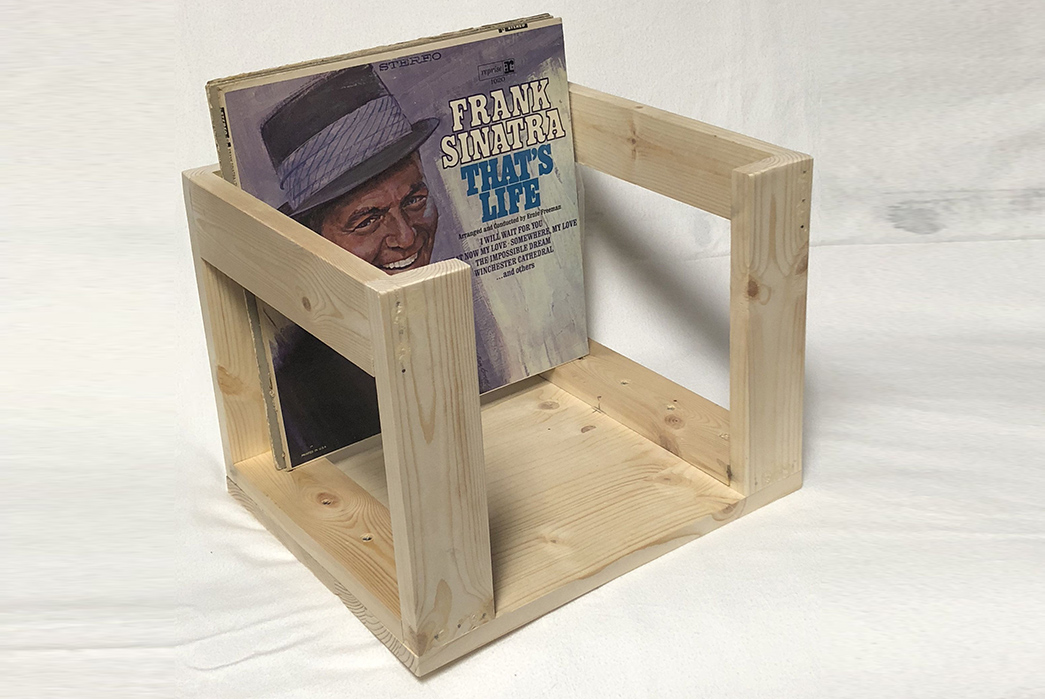
Image via Pinterest

